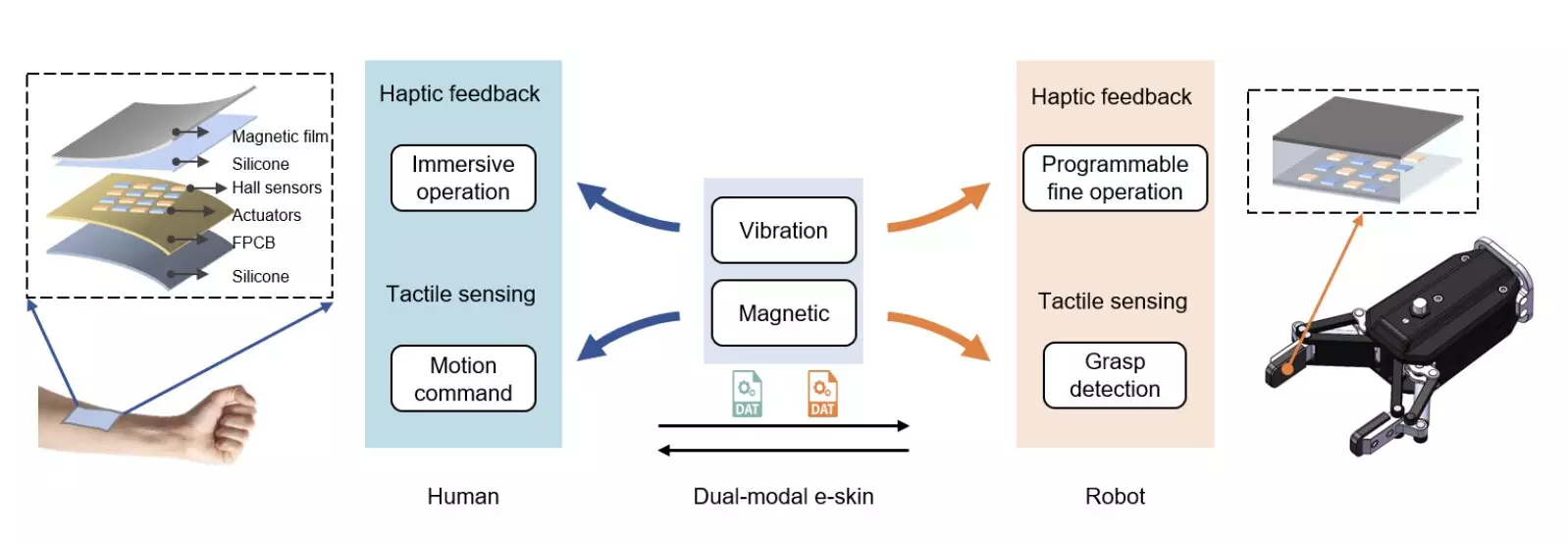In recent years, the field of materials science and engineering has seen a significant advancement in the development of materials for use in robotic and prosthetic applications. One such innovation is the introduction of electronic skins, or e-skins, that are designed to enhance the sensory capabilities of robots and prosthetic devices. These e-skins are capable of sensing the surrounding environment and replicating the sense of touch artificially.
The Introduction of Dual-Modal Tactile E-Skin
Researchers at Tsinghua University have recently unveiled a new dual-modal tactile e-skin that has the potential to revolutionize human-robot interactions. This groundbreaking technology was presented in a paper on the preprint server arXiv and has been accepted by IEEE ICRA 2024. Unlike traditional electronic skins that can either sense tactile information or provide tactile feedback, this dual-modal e-skin is capable of both. This capability opens up new possibilities for bidirectional touch-based interactions between humans and robots.
The dual-modal tactile e-skin developed by Dr. Wenbo Ding and his team integrates multimodal magnetic tactile sensing with vibration feedback. This e-skin is composed of a flexible magnetic film, silicon elastomer, Hall sensor array, actuator array, and microcontroller unit. The Hall sensor detects the deformation of the magnetic film caused by mechanical pressure, leading to changes in the magnetic field and achieving multi-dimensional tactile perception. At the same time, the actuator array generates mechanical vibration to provide tactile feedback, improving the interactive experience between humans and robots.
Through a series of experiments, Dr. Ding and his colleagues tested the prototype of their dual-modal tactile e-skin and explored its potential applications. They found that the e-skin was effective in both sensing tactile information and providing tactile feedback. One innovative application includes precise weighing, where tactile vibrations are used in unique ways to enhance the control accuracy of the weighing process. Additionally, the dual-modal tactile e-skin is cost-effective, with a total cost of less than $26 and weighing less than 29 grams.
The introduction of the dual-modal tactile e-skin has paved the way for further advancements in the field of robotics and prosthetics. This technology has the potential to revolutionize robotic manipulation, improve control in industrial robots, and enhance the development of sophisticated prosthetic limbs. Moving forward, Dr. Ding and his team plan to focus on miniaturizing e-skin components for a wider range of applications, incorporating new sensing modalities such as temperature sensing, and adding auditory feedback to further enhance the user experience.


Leave a Reply